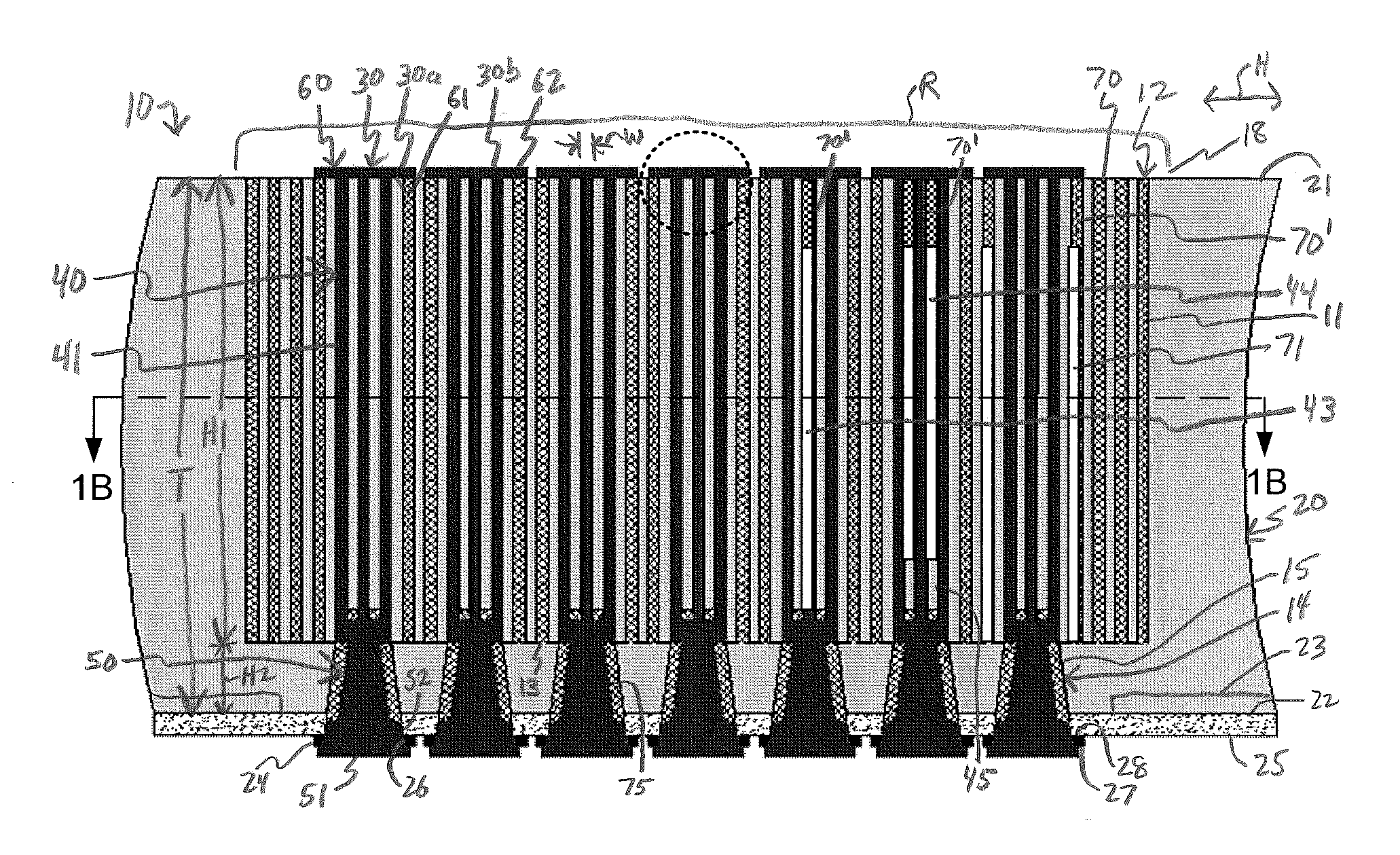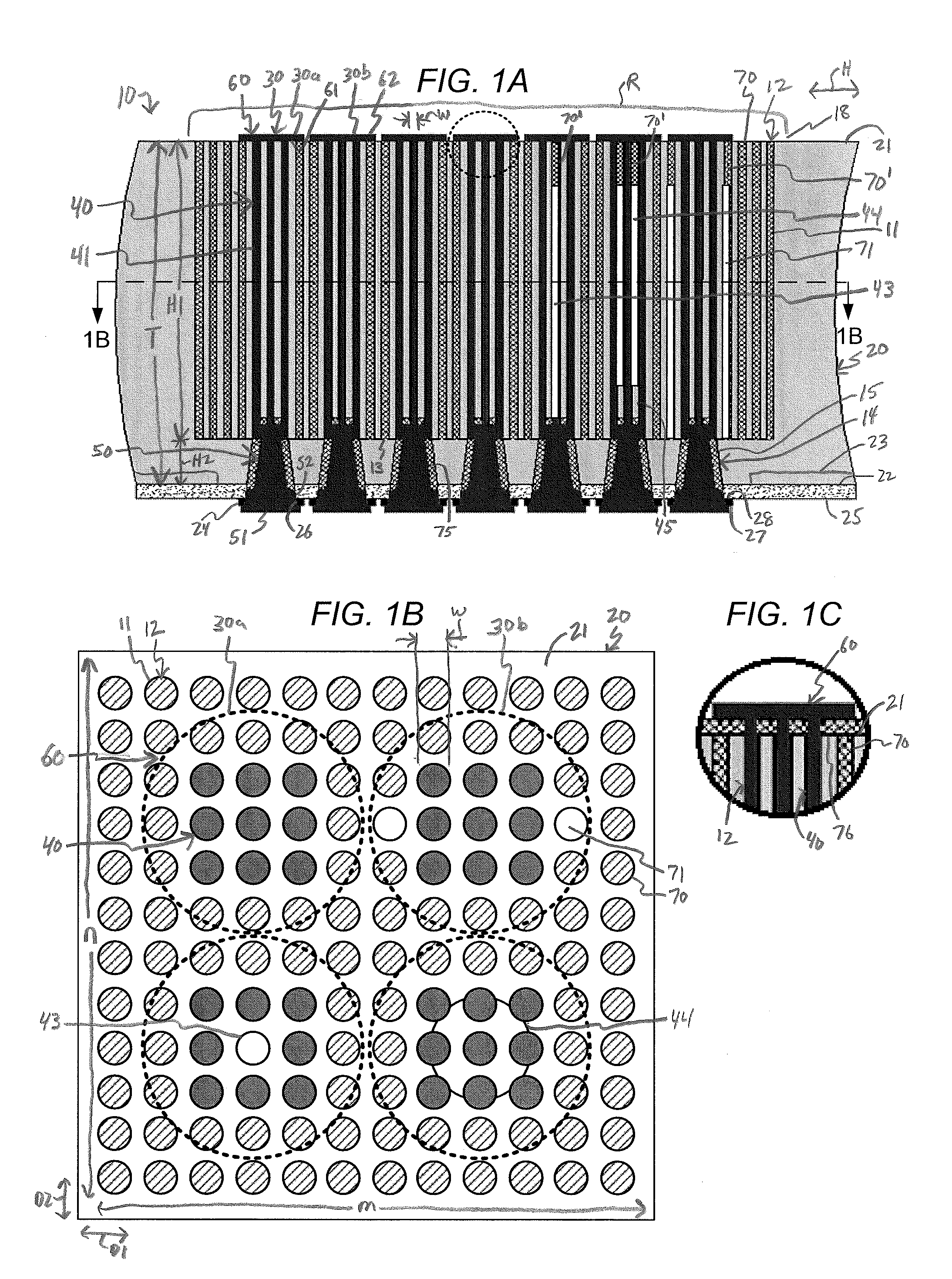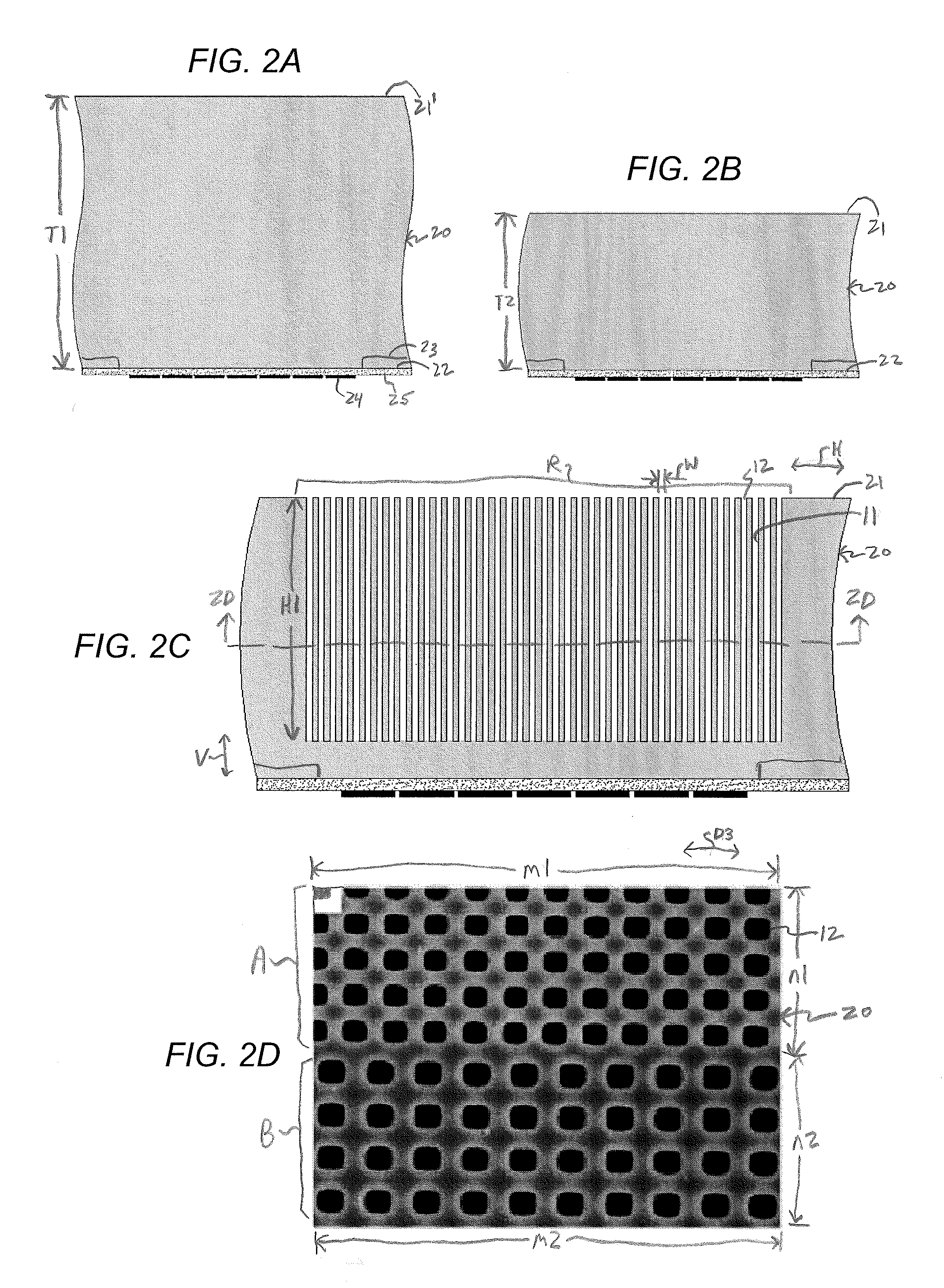Vias in porous substrates
a porous substrate and via technology, applied in the field of packaging of microelectronic devices, can solve the problems of increasing the amount of silicon, increasing the cost of each chip, and conventional vias may have reliability challenges
- Summary
- Abstract
- Description
- Claims
- Application Information
AI Technical Summary
Benefits of technology
Problems solved by technology
Method used
Image
Examples
Embodiment Construction
[0046]As illustrated in FIGS. 1A and 1B, a microelectronic unit 10 can include a silicon substrate 20 having a rear surface or first surface 21 and a front surface or second surface 22 remote therefrom and a plurality of through-silicon vias 30 (“TSVs”) extending therethrough between the front and rear surfaces.
[0047]In some embodiments, the microelectronic unit 10 may be a semiconductor chip, a wafer, or the like. The substrate 20 preferably has a coefficient of thermal expansion (“CTE”) less than 8*10−6 / ° C. (or ppm / ° C.). In a particular embodiment, the substrate 20 can have a CTE less than 7*10−6 / ° C. The substrate 20 may consist essentially of an inorganic material such as silicon. In embodiments wherein the substrate 20 is made of a semiconductor, such as silicon, a plurality of active semiconductor devices (e.g., transistors, diodes, etc.) can be disposed in an active semiconductor region 23 thereof located at and / or below the front surface 22. The thickness of the substrate ...
PUM
 Login to View More
Login to View More Abstract
Description
Claims
Application Information
 Login to View More
Login to View More - R&D
- Intellectual Property
- Life Sciences
- Materials
- Tech Scout
- Unparalleled Data Quality
- Higher Quality Content
- 60% Fewer Hallucinations
Browse by: Latest US Patents, China's latest patents, Technical Efficacy Thesaurus, Application Domain, Technology Topic, Popular Technical Reports.
© 2025 PatSnap. All rights reserved.Legal|Privacy policy|Modern Slavery Act Transparency Statement|Sitemap|About US| Contact US: help@patsnap.com



